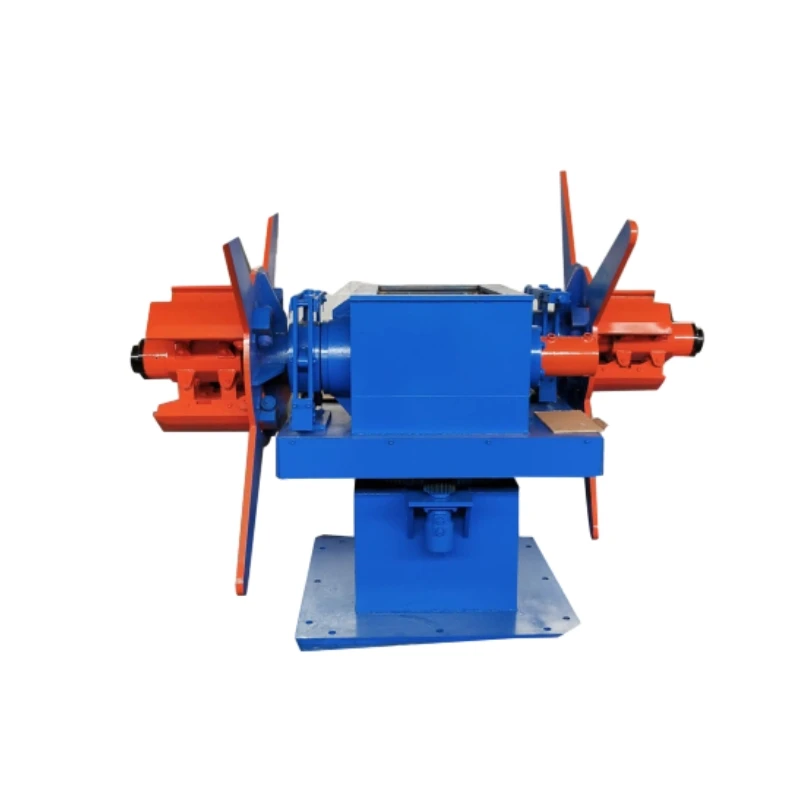tandem rolling mill
Understanding Tandem Rolling Mills A Comprehensive Overview
Tandem rolling mills are a cornerstone of modern metal manufacturing, particularly in the production of steel and aluminum. This sophisticated process enables the continuous reduction of metal thickness through a series of rolling stands that are arranged in a sequence. By understanding the mechanisms and advantages of tandem rolling mills, we can appreciate their significance in the metalworking industry.
What is Tandem Rolling?
Tandem rolling refers to a metal forming process in which multiple rolling stands are employed sequentially to reduce the thickness of a material, typically metal sheets or strips. Unlike conventional rolling mills where the material passes through a single stand, tandem mills allow for continuous processing. After the first stand reduces the thickness of the material, it is immediately fed into the next stand, where further reduction occurs. This continuous operation enhances efficiency, significantly reducing production times and increasing output.
The Structure of Tandem Rolling Mills
A typical tandem rolling mill consists of several stands, each equipped with rolls that exert pressure on the incoming metal. The number of stands can vary depending on the specific requirements and the type of material being processed. Each stand can be individually controlled, allowing for precise adjustments in thickness, width, and surface finish. Key components of a tandem rolling mill include
1. Rolling Stands These are the heart of the operation, where the actual deformation of the metal occurs. 2. Levelers/Guides Positioned before and after the stands, they ensure that materials enter and exit the stands without buckling or misalignment. 3. Hydraulic Systems These systems provide the necessary force to the rolls, enabling adjustments based on the type and thickness of the metal. 4. Cooling Systems As metal is deformed, it generates heat, which can affect its properties. Cooling systems are crucial for maintaining the integrity of the material.
Advantages of Tandem Rolling Mills
tandem rolling mill

The implementation of tandem rolling mills offers numerous benefits
1. Increased Production Efficiency By allowing for continuous processing, tandem mills can produce large volumes of material more quickly than traditional methods. 2. Cost-Effectiveness The high throughput of tandem mills reduces the cost per unit of production, making them attractive for large-scale manufacturing. 3. Improved Material Properties Due to the controlled deformation process, tandem rolling can enhance the mechanical properties of metals, including strength and ductility. 4. Versatility Tandem rolling mills can be adapted to a variety of materials and specifications, allowing for the production of sheets, strips, and plates of different dimensions and qualities.
Applications in Industry
The applications of tandem rolling mills are extensive. They are widely used in industries such as automotive, aerospace, construction, and manufacturing. In the automotive industry, for example, tandem rolling mills produce high-strength steel sheets that are crucial for vehicle safety and performance. In the aerospace sector, lightweight aluminum alloys are rolled to meet stringent requirements for weight and durability. Furthermore, the construction industry relies on tandem mills for the production of steel beams and panels essential for structural integrity.
Challenges and Considerations
Despite their advantages, tandem rolling mills are not without challenges. The complexity of controlling multiple stands effectively requires sophisticated automation and monitoring systems. Additionally, the initial set-up costs can be high, which may deter smaller manufacturers from investing in this technology. Regular maintenance is also crucial to ensure the longevity and performance of the equipment.
Conclusion
In conclusion, tandem rolling mills play a vital role in the modern metal fabrication landscape. Their ability to efficiently produce high-quality metal products makes them indispensable in various industries. As technology advances, the capabilities and efficiencies of tandem rolling mills are likely to improve further, continuing to shape the future of metal manufacturing. Understanding this technology not only highlights its importance but also uncovers the potential for innovations that can drive the industry forward.
-
High Frequency Straight Seam Welded Pipe Production Line|BzZhou Xinghua|Precision Welding&EfficiencyNewsJul.30,2025
-
High Frequency Straight Seam Welded Pipe Production Line - BzZhou Xinghua|Precision Engineering&EfficiencyNewsJul.30,2025
-
High-Frequency Straight Seam Welded Pipe Production Line-BzZhou Xinghua Machinery Equipment Manufacturing Co., LTD.NewsJul.30,2025
-
High-Frequency Straight Seam Welded Pipe Production Line-BzZhou Xinghua Machinery Equipment Manufacturing Co., LTD.|Precision Manufacturing, High EfficiencyNewsJul.30,2025
-
High Frequency Straight Seam Welded Pipe Production Line-BzZhou Xinghua Machinery Equipment Manufacturing Co., LTD.|Precision Steel Pipe Manufacturing&Industrial EfficiencyNewsJul.29,2025
-
High-Frequency Straight Seam Welded Pipe Production Line-BzZhou Xinghua Machinery Equipment Manufacturing Co., LTD.|Precision Steel Pipe Manufacturing&Industrial EfficiencyNewsJul.29,2025


